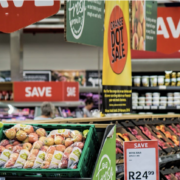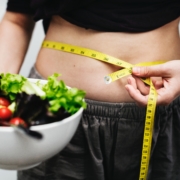Insulin Resistance As The Starting Gate
We all know someone with Type 2 Diabetes. What is their primary challenge? It’s common to think it is high blood sugar, but it is actually insulin resistance. What is the main issue for someone with cardiovascular disease or high blood pressure? Insulin resistance. What about frequent migraines, non-alcoholic fatty liver, osteoporosis, or infertility? You guessed it – insulin resistance. Are you beginning to see insulin resistance as the starting gate?
Insulin Resistance As The Starting Gate
Insulin is a hormone produced in the pancreas that opens the door for blood sugar to get into cells for fuel. As such, it affects every cell in your body, regulating how they use energy or change size and prompting the production of other hormones.
Recent decades have seen a significant increase in the amount of added sugar and flour-based ingredients in our foods. This means there are more individuals whose bodies experience higher levels of blood sugar prompting their body to release insulin. Because these foods are not nutritionally satisfying, we tend to snack or sip on sweet beverages throughout the day. And our insulin levels rise higher.
What do you do when starting your car’s engine causes the radio to blare loudly? You jump to turn the volume down. Our cells do the same when insulin is blaring loudly – they reduce their response, and insulin resistance begins.
Interestingly, you can have the beginning stages of insulin resistance and still have “normal” levels of blood glucose (sugar) on your labs. Dr. Mark Hyman, a Functional Medicine Practitioner, says, “doctors are trained to measure fasting blood sugar but that is the last marker to increase. High insulin levels can precede a diabetes diagnosis by decades.”
Rather than wait until fasting blood sugar is high, I look for it to be less than 90 on a metabolic lab panel. Over than indicates the beginning stages of insulin resistance.
Tips for Biohacking Insulin Resistance
Reduce Stress, which increases insulin independently of your food. Take breaks for deep breathing and explore meditation.
Improve Your Sleep. Just one night of poor sleep can increase your insulin resistance by 20%. My clients often find it helpful to use an Oura Ring, or Fitbit to monitor their sleep patterns.
Increase Your Movement by extending the distance you walk – parking farther out in the parking lot or walking after a meal. Resistance training is most effective for restoring insulin sensitivity.
Increase Fiber Consumption by eating more vegetables and less flour-based foods.
Hot Or Cold Exposure can also boost insulin sensitivity. Infrared saunas can provide a place to relax or to exercise. A cold plunge could be in a winter pond or as simple as turning your shower to cold for the last couple of minutes.
I have always preferred the proactive approach to wellness. Rather than wait to see what crops up as the years go by, I want to look for potential hazards and adjust early. It’s far easier to make small adjustments before you reach the point of a diagnosable condition. Yet, if you have a diagnosis, you aren’t under a life sentence.
Your body isn’t dumb. It adjusts for survival depending on the information and circumstances provided. If you want improved function, you need to provide better information (building blocks) for it to use and an environment for healing.
I’ve seen amazing turnarounds in my clients and I believe the same is possible for you. Make the changes to improve insulin sensitivity and you will be amazed at the results!











Leave a Reply
Want to join the discussion?Feel free to contribute!